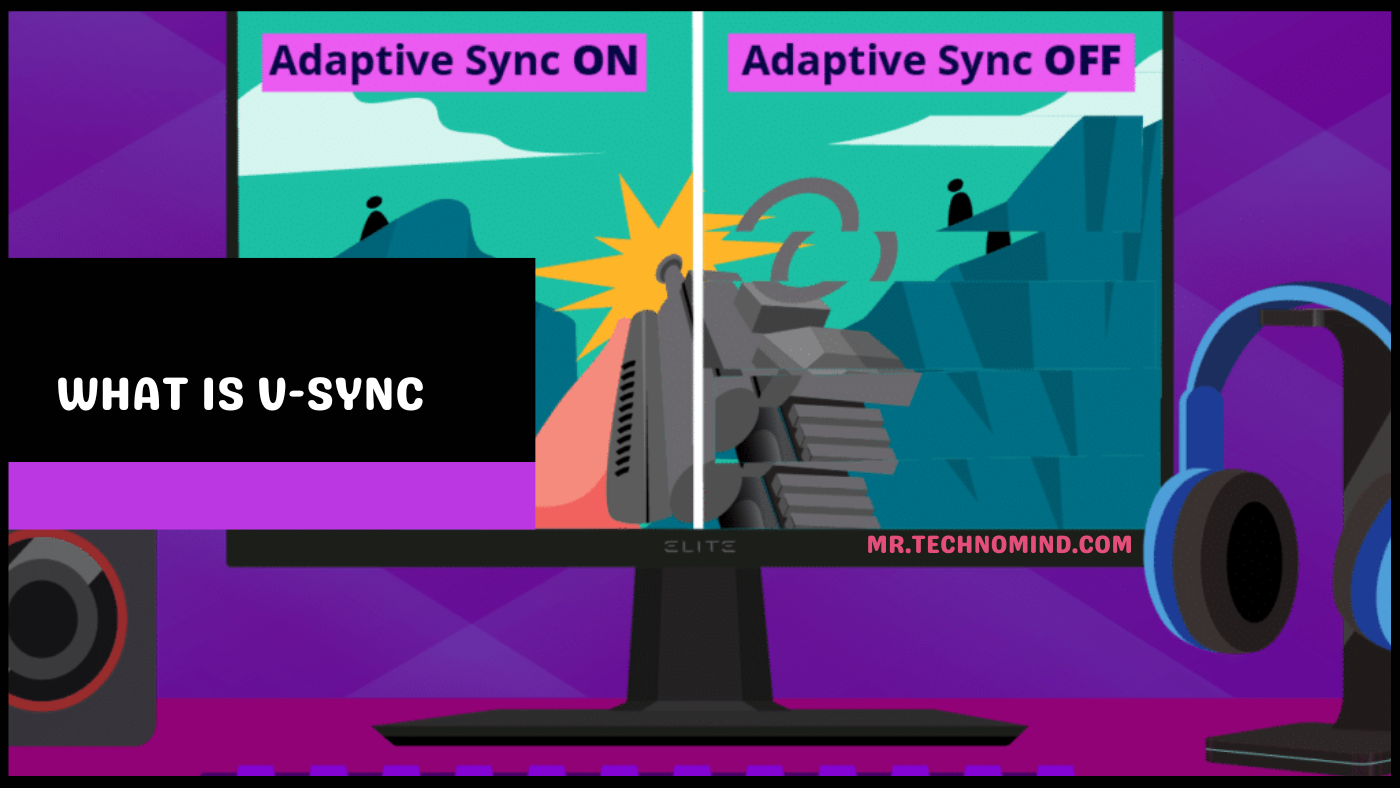What Is V-SYNC : A Brief Overview and is it actually worth using?

Today’s video games provide a bewildering variety of graphic settings. Most of these offer either improved performance or higher-quality visuals. Vertical Sync, also referred to as V-Sync, is a little trickier.
V-Sync does not affect the quality of the graphics on its own, but turning it on stops unsightly screen tearing. Although it might seem obvious, doing so might hurt your screen resolution and cause input lag, both of which are detrimental to competitive gaming.
Unsure of how to use this enigmatic graphics setting? Let’s investigate what drives V-Sync.
What is V-Sync?

VSync is a technique for synchronising a video game’s frame rate with the refresh rate of the monitor showing it. Vertical Sync was designed by graphics card manufacturers to do rid of screen tearing, a visual artefact. One half of the displayed frame is separated horizontally as a result, and one half of the screen moves slower than the other.
While this might seem to be a break in the fabric of time and space, it’s actually just your GPU producing frames at a rate that exceeds the maximum refresh rate of your monitor. You may see two or more GPU frames split horizontally during a single monitor refresh, depending on how much your GPU’s frame rate exceeds your monitor’s refresh rate.
By constraining the GPU frame rate to the monitor’s refresh rate, VSync gets rid of screen tearing. But that by itself is insufficient to stop screen tearing. Additionally, the setting forces the GPU-rendered frames to be shown in sync with the monitor’s refresh rate.
Eliminating screen tearing requires stopping the simultaneous display of portions of several frames. And VSync does it by limiting the GPU’s ability to produce new frames in the course of the sensor’s refresh cycle.
Should we use V-Sync oftenly?

The most straightforward response would be “yes,” you should utilise VSync, given what has been discussed thus far. The benefits are obvious, but the drawbacks are less likely to cause you trouble.
The more subtle response, though, is that VSync should only be used in the most dire situations. There are simpler and better options available, which is the cause of this.
Since VSync technology is relatively primitive, as was previously said, it did not take long for the other GPU industry titans to offer their own alternatives.
VSync Causes More Issues Than It Addresses
Although VSync is a sure solution for screen tearing, performance and responsiveness are sacrificed. Let’s examine VSync’s two main purposes to better understand why. The GPU frame rate is first slowed to correspond with the refresh rate of the monitor. Second, it adjusts GPU frame sequencing to coincide with the refresh rate of the monitor.
Do you note how the GPU output is slowed down in both VSync techniques in order to correspond to the constant monitor refresh rate? That particular point is crucial. A GPU produces frames at a rate that is inversely related to the intricacy of the in-game image being displayed, while the display updates at regular intervals.
The GPU cannot send the most current frame to the monitor unless it is forced to synchronise its frame pace with the refresh rate. This is referred to as input lag by gamers, who feel that the content displayed on the screen follows their genuine joystick inputs. The crosshair significantly lags behind your actual mouse inputs in fast-paced FPS games because of this input latency.
Even worse than lag, VSync can ruin overall ’s review by sharply lowering frame rate. This is related to the fact that it frequently restricts GPU frame rate to track refresh rate. While this is great when your GPU’s frame rate exceeds the refresh rate of your monitor, it becomes problematic when the frame rate falls below the refresh rate threshold.
What Are Fast Sync,Adaptive V-Sync and G-Sync?
Fortunately, AMD and NVIDIA were aware of the issues with V-Sync from the start. Both GPU manufacturers have introduced improved VSync variants that address the aforementioned problems. Either the GPU driver control suite or in-game settings are typically used to force these features.
Adaptive V-Sync
Adaptive V-Sync, created by NVIDIA, gets rid of all the unsightly input latency and performance problems caused by the GPU’s inability to keep up with the monitor’s refresh rate. This V-Sync solution is only in use while the GPU can provide the monitor’s required refresh rate. V-Sync is immediately turned off by Adaptive Sync the moment that situation becomes unworkable. This strikes a good mix between screen tearing reduction and video game efficiency.
Fast Sync
Fast Sync, which was created by NVIDIA as well, enhances Adaptive V-Sync with the enchantment of triple buffering. Triple buffering entails the GPU producing one additional frame, to put it simply. As a result, it can choose which of the most recent two generated frames to send to the monitor as it waits for the monitor to refresh. Presenting the most recent frame is intended to reduce input lag, but doing so also uses a lot of GPU resources.
G-Sync
Being the first business to introduce a ground-breaking product offers advantages for NVIDIA. NVIDIA was adamant about making the most of this and wanted to leave no funds on the table.
Yes, despite the fact that G-Sync is the ideal remedy for screen splitting, it does have a cost.
NVIDIA had to create a module that is built right into the monitors in order to find a solution to the issue of changing the refresh rate. This module may dynamically alter the refresh rate of the monitor to correspond to the frames generated by the GPU when used with the software solution.
Conclusion
We have discussed the drawbacks of using V-Sync as well as how it prevents screen tearing. While NVIDIA and AMD have introduced more advanced versions of V-Sync that minimise these drawbacks, G-Sync and FreeSync technologies offer a completely new method of circumventing these limitations.
But to do that, you need graphics cards, connectors, and displays that are compatible. For those without the expensive gear, choosing whether to turn V-Sync on or off depends on your preferences. If your GPU has the power to match the monitor’s refresh rate, V-Sync works just well. If you don’t like input lag, you’re better off without it.